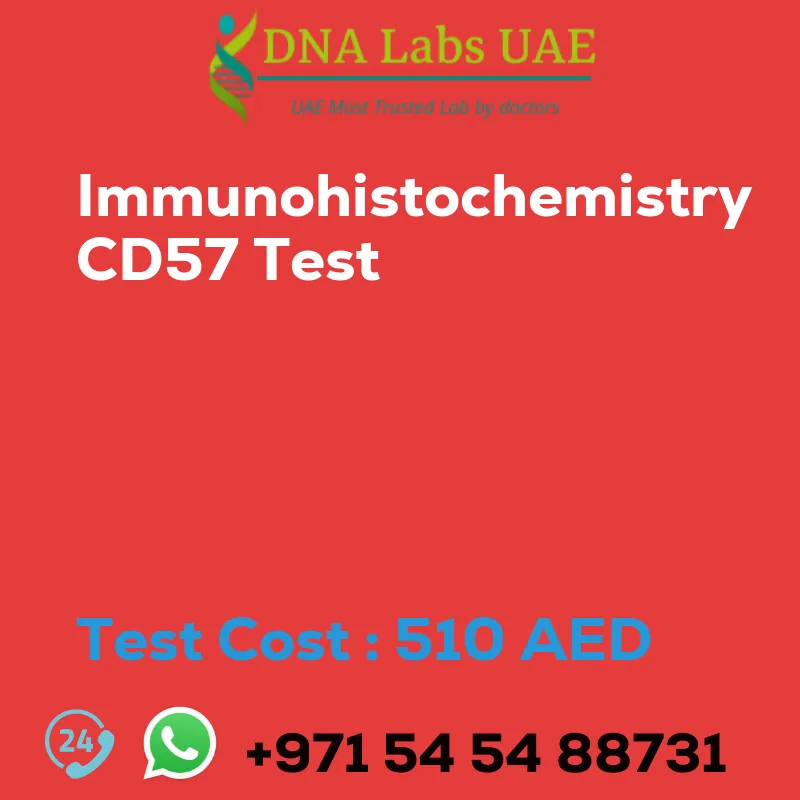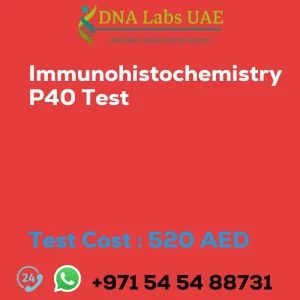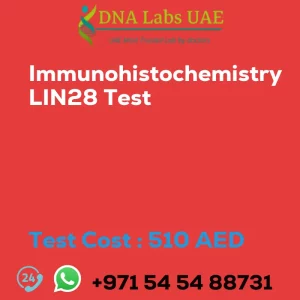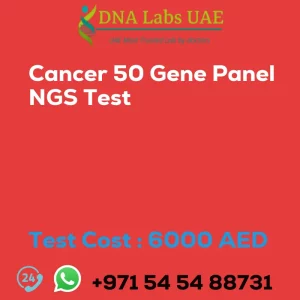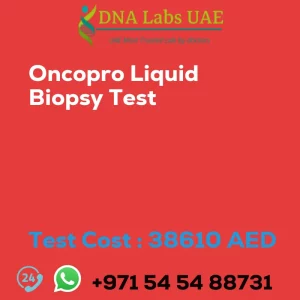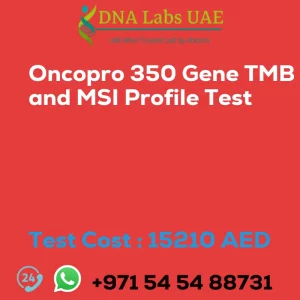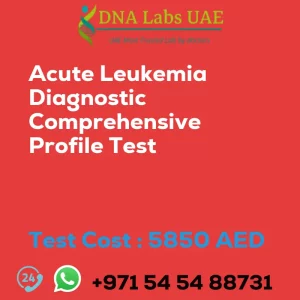IMMUNOHISTOCHEMISTRY CD57 Test
Welcome to DNA Labs UAE, a genetic lab specializing in advanced testing and diagnostics. In this blog post, we will discuss the IMMUNOHISTOCHEMISTRY CD57 Test, its cost, symptoms, diagnosis, and other important details.
Test Name: IMMUNOHISTOCHEMISTRY CD57 Test
Components: CD57 antigen
Price: 510.0 AED
Sample Condition
Please submit tumor tissue in either 10% Formal-saline or Formalin fixed paraffin embedded block. The sample should be shipped at room temperature. Additionally, provide a copy of the Histopathology report, site of biopsy, and clinical history.
Report Delivery
Sample: Daily by 6 pm
Report Block: 5 days
Tissue Biopsy: 5 days
Tissue large complex: 7 days
Method
The IMMUNOHISTOCHEMISTRY CD57 Test is performed using the immunohistochemistry (IHC) method.
Test Type
The IMMUNOHISTOCHEMISTRY CD57 Test is primarily used for cancer detection.
Doctor
This test is usually requested by an Oncologist or a Pathologist.
Test Department
The IMMUNOHISTOCHEMISTRY CD57 Test is conducted in the Histology department.
Pre Test Information
Before undergoing the test, make sure to provide a copy of the Histopathology report, site of biopsy, and clinical history.
Test Details
The CD57 test is an immunohistochemistry (IHC) test used to detect the presence of CD57 antigen on cells in tissue samples. CD57, also known as HNK-1 or Leu-7, is a marker for natural killer (NK) cells and a subset of T cells. The CD57 IHC test involves staining tissue sections with an antibody specific to CD57. This antibody binds to the CD57 antigen on the cell surface, allowing for visualization of CD57-positive cells under a microscope.
The staining intensity and distribution of CD57-positive cells can provide information about the presence and distribution of NK cells and CD57-positive T cells in the tissue sample. This test is commonly used in research and clinical settings to evaluate the immune response in various diseases, including cancer, infectious diseases, and autoimmune disorders. It can help determine the density and distribution of CD57-positive cells within the tissue, which may have implications for disease prognosis and treatment response.
Overall, the CD57 immunohistochemistry test is a valuable tool for studying the role of CD57-positive cells in immune responses and disease processes.
| Test Name | IMMUNOHISTOCHEMISTRY CD57 Test |
|---|---|
| Components | |
| Price | 510.0 AED |
| Sample Condition | Submit tumor tissue in 10% Formal-saline OR Formalin fixed paraffin embedded block. Ship at room temperature. Provide a copy of the Histopathology report, Site of biopsy and Clinical history. |
| Report Delivery | Sample Daily by 6 pm; Report Block: 5 days Tissue Biopsy: 5 days Tissue large complex : 7 days |
| Method | Immunohistochemistry |
| Test type | Cancer |
| Doctor | Oncologist, Pathologist |
| Test Department: | HISTOLOGY |
| Pre Test Information | Provide a copy of the Histopathology report, Site of biopsy and Clinical history. |
| Test Details |
The CD57 test is an immunohistochemistry (IHC) test used to detect the presence of CD57 antigen on cells in tissue samples. CD57, also known as HNK-1 or Leu-7, is a marker for natural killer (NK) cells and a subset of T cells. The CD57 IHC test involves staining tissue sections with an antibody specific to CD57. This antibody binds to the CD57 antigen on the cell surface, allowing for visualization of CD57-positive cells under a microscope. The staining intensity and distribution of CD57-positive cells can provide information about the presence and distribution of NK cells and CD57-positive T cells in the tissue sample. The CD57 test is commonly used in research and clinical settings to evaluate the immune response in various diseases, including cancer, infectious diseases, and autoimmune disorders. It can help determine the density and distribution of CD57-positive cells within the tissue, which may have implications for disease prognosis and treatment response. Overall, the CD57 immunohistochemistry test is a valuable tool for studying the role of CD57-positive cells in immune responses and disease processes. |

